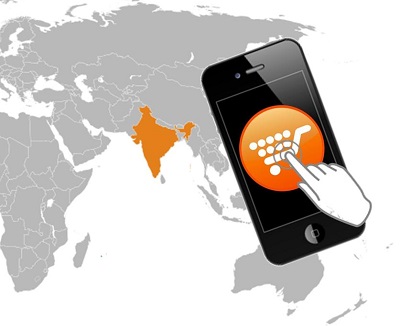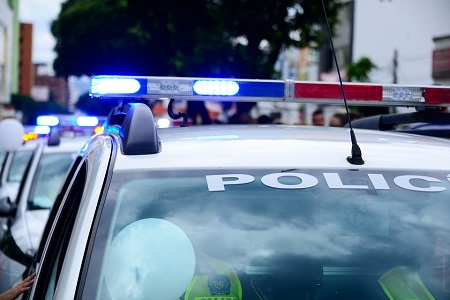In India, the vast majority of consumers are turning to m-commerce to buy their products and services online.
E-commerce has always been somewhat unpredictable in India, but Indian mobile shopping appears to be taking off with a vengeance. For instance, despite the fact that Flipkart broke the 100 million user mark two months ago, its valuation recently fell by another 38 percent.
That said, while online shopping may be somewhat unstable, mobile commerce looks much more steady.
Current Indian mobile shopping trends suggest that the market will bring in $48 billion in 2020. Furthermore, recent Regalix research indicates that 83 percent of Indian consumers prefer to use their smartphones. This makes m-commerce the most popular online shopping channel in the country.
 The same research showed that mobile commerce users in India are primarily within certain age groups. Interestingly, people between the ages of 25 and 34 years were more likely to use their smartphones to shop than those from 18 to 24 years old. In fact, 90 percent of online shoppers in that first age category prefer mobile.
The same research showed that mobile commerce users in India are primarily within certain age groups. Interestingly, people between the ages of 25 and 34 years were more likely to use their smartphones to shop than those from 18 to 24 years old. In fact, 90 percent of online shoppers in that first age category prefer mobile.
Overall, Indian mobile shopping statistics show that 1 in 3 people in the country is shopping with a smartphone.
The Regalix report showed that exactly one third – 33 percent – of shoppers in India shop over mobile commerce at least one time per month. This option provides them with a broad spectrum of options and allows for convenient price comparison no matter where the consumer happens to be.
Another 28 percent of Indian shoppers shop even more frequently than that, once per week. One in four consumers – 25 percent – shop over mobile phone at least once per three months. Only 14 percent of participants said they shopped online over their mobile devices once per year.
One noteworthy Indian mobile shopping trend pointed out by the Regalix report had to do with who was shopping. Men appeared to be using mobile phones to shop more than women. Forty four percent of women were shopping at least once per month over mobile. At the same time, 63 percent of men were buying products and services over their smartphones.
Denny |
December 15, 2016
A new strategy could have law enforcement personnel in the Netherlands wearing high tech devices.
Law enforcement in the Netherlands are looking to a new high tech police augmented reality system to help them to fight crime. The Dutch national police has been collaborating with several other organizations in this effort. It may mean that they one day use the Microsoft Hololens during a regular day.
The Dutch police have identified a string of different ways in which augmented reality could help them.
The police augmented reality project is the result of a collaboration among the national police force, the national fire brigade, the Dutch Forensic Institute, Delft University of Technology, and Twnkls, an AR development firm.
 Chief Inspector Rob Kouwenhoven spoke in an interview with a Dutch newspaper explaining that there are many scenarios in which augmented reality technology could be very helpful.
Chief Inspector Rob Kouwenhoven spoke in an interview with a Dutch newspaper explaining that there are many scenarios in which augmented reality technology could be very helpful.
The police augmented reality technology is still in somewhat of a prototype phase as it is tested.
At the moment, the AR tech being tested out involves the use of a smartphone camera attached to the shoulder of the user. It also requires another device to be strapped to the wrist. That gadget can be used for taking notes about a crime scene or for marking evidence.
The national police force is currently looking into whether or not it will be possible to test the Hololens augmented reality device. That Microsoft gadget may be able to provide an overlay of relevant information to wearers conducting a forensic investigation. This has the potential to simplify the investigation process and bring a crime’s various puzzle pieces together.
Kouwenhover pointed out that this AR tech could also be helpful within the courtroom. It could be used to reconstruct the scene of a crime in a much clearer and more visual way. At the moment, this effort requires a physical reenactment of the event in combination with a great deal of paperwork.
By using police augmented reality, a judge would be able to more clearly and realistically see what happened during the event. It could include the display of pieces of evidence and illustrated with digital animations and annotations overlaid on top of the crime scene imagery. Should things go as planned, the tech could be launched for police use in 5 years.
 The same research showed that mobile commerce users in India are primarily within certain age groups. Interestingly, people between the ages of 25 and 34 years were more likely to use their smartphones to shop than those from 18 to 24 years old. In fact, 90 percent of online shoppers in that first age category prefer mobile.
The same research showed that mobile commerce users in India are primarily within certain age groups. Interestingly, people between the ages of 25 and 34 years were more likely to use their smartphones to shop than those from 18 to 24 years old. In fact, 90 percent of online shoppers in that first age category prefer mobile.
 Chief Inspector Rob Kouwenhoven spoke in an interview with a Dutch newspaper explaining that there are many scenarios in which
Chief Inspector Rob Kouwenhoven spoke in an interview with a Dutch newspaper explaining that there are many scenarios in which 